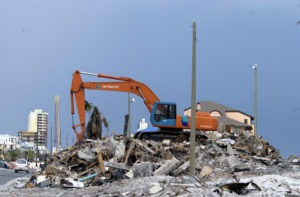Expertise in FEMA 428: Public Assistance Alternative Procedures (PAAP)

IEM: Number One in Providing Support for “428” Alternative Procedures
In 2013, the Sandy Recovery Improvement Act amended Section 428 of the Stafford Act, authorizing FEMA to enact new Public Assistance Alternative Procedures (PAAP). Commonly referred to as “alternative procedures” or “428”, the new model is intended to reduce disaster costs, streamline delivery and expedite the delivery of recovery funds, while most importantly providing grantees (states) with greater flexibility on how disaster recovery funds are applied for certain types of work. The alternative procedures model also means federal funding for hazard mitigation can now be made available sooner in the recovery process, providing a unique window of opportunity for grant recipients to build back infrastructure in ways that ensure resiliency.
Applied strategically, 428 can provide states and localities with significant benefits. But navigating this new process can be challenging, and benefits are dependent on the ability to estimate costs in detail and correctly the first time. There are risks involved in this new model, and many states and localities are right to be concerned about potential negative effects this could have on recovery plans since if estimates are incorrect, jurisdictions will likely be forced to dip into their own funds to complete projects. States and localities can mitigate this risk by ensuring they have expert support through the Public Assistance process including the development of project worksheets and cost estimates.
IEM has managed billions in Public Assistance (PA), Hazard Mitigation Grant Program (HMGP), and Community Development Block Grant – Disaster Recovery (CDBG-DR) funds and is the industry leader in helping clients estimate, document, and administer 428 funds for large infrastructure projects. After Katrina, IEM led the way in pioneering innovative uses for PA funds, applying streamlined procedures to revitalize New Orleans’ schools as part of the Recovery School District revitalization project. After the rollout of 428 post Hurricane Sandy, IEM experts supported New York State’s recovery under the alternative procedures model, formulating and developing cost estimates to help deliver $9.9 billion in public assistance projects.
Today, IEM employs the very architects and leaders who helped develop this new model at FEMA. IEM’s leadership understands better than anyone else how these programs work, and how to apply their decades of expertise in disaster recovery to help states get the most out of every PA dollar available.




